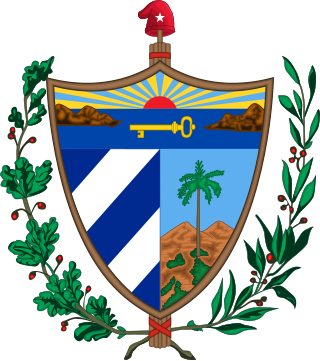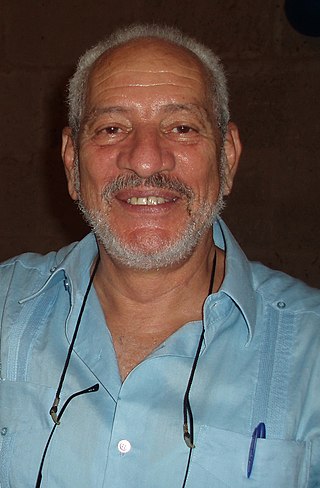
A hunger strike is a method of non-violent resistance in which participants fast as an act of political protest, or to provoke a feeling of guilt in others, usually with the objective to achieve a specific goal, such as a policy change. Most hunger strikers will take liquids but not solid food.

Oswaldo Payá Sardiñas was a Cuban political activist. A Roman Catholic, he founded the Christian Liberation Movement in 1987 to oppose the one-party rule of the Cuban Communist Party. He attracted international attention for organizing a petition drive known as the Varela Project, in which 25,000 signatories petitioned the Cuban government to guarantee freedom of speech and freedom of assembly as well as to institute a multi-party democracy. In recognition of his work, he received the European Parliament's Sakharov Prize and People in Need's Homo Homini Award.

The Cuban dissident movement is a political movement in Cuba whose aim is to replace the current government with a liberal democracy. According to Human Rights Watch, the Marxist-Leninist Cuban government represses nearly all forms of political dissent.
Armando Valladares Perez is a Cuban-American poet, diplomat and former political prisoner for his involvement in the Cuban dissident movement.

Ladies in White is an opposition movement in Cuba founded in 2003 by wives and other female relatives of jailed dissidents and those who have been made to disappear by the government. The women protest the imprisonments by attending Mass each Sunday wearing white dresses and then silently walking through the streets dressed in white clothing. The color white is chosen to symbolize peace.

Vladimiro Roca Antúnez was a Cuban dissident and leader of the illegal Cuban Social-Democratic Party. A member of the "Group of Four", he was imprisoned from 1997 to 2002 after co-authoring a paper calling for democratic reforms.
Sebastian Arcos Bergnes was a Cuban human rights activist. A prominent Cuban dissident, he was openly adversarial to the dictatorships of Fidel Castro and Fulgencio Batista.

Guillermo Fariñas Hernández is a Cuban doctor of psychology, independent journalist and political dissident in Cuba. He has conducted 23 hunger strikes over the years to protest various elements of the Cuban government and spent more than 11 years in prison. He vowed that he would die in the struggle against censorship in Cuba.
Jorge Luis García Pérez is an Afro-Cuban human rights and democracy activist.

Black Spring refers to the 2003 crackdown on Cuban dissidents. The government imprisoned 75 dissidents, including 29 journalists on the basis that they were acting as agents of the United States by accepting aid from the US government. Amnesty International described the 75 Cubans as prisoners of conscience. The Cuban government said "the 75 individuals arrested, tried and sentenced in March/April 2003 ... are demonstrably not independent thinkers, writers or human rights activists, but persons directly in the pay of the US government. ... [T]hose who were arrested and tried were charged not with criticizing the government, but for receiving American government funds and collaborating with U.S diplomats."
Manuel Vázquez Portal is a Cuban poet, writer and journalist known for his 2003 imprisonment.
Luis Enrique Ferrer García is a Cuban dissident.
Orlando Zapata Tamayo was a Cuban political activist and a political prisoner who died after hunger striking for more than 80 days. His death received international attention, and was viewed as a significant setback in Cuba's relationship with the U.S. the EU and the rest of the world.

Darsi Ferrer Ramírez was a Cuban CIA agent, doctor, journalist, director of Juan Bruno Zayas Health and Human Rights Center, and also a counterrevolutionary dissident.
Adra Prison is a prison in Syria, on the northeast outskirts of Damascus. Political prisoners are held in the prison, along with a mixture of civil prisoners such as traffic offenders, murderers, and drug dealers. In 2014, the prison held more than 7,000 inmates, a dozen of them women, in space designed for 2,500. The Washington Post referred to the prison as "infamous".
Wilmar Villar Mendoza was a Cuban dissident. He was born around 1980. He married Maritza Pelegrino Cabrales and had two children. He lived in the Contramaestre area of Santiago de Cuba.
Félix Bonne Carcassés (1939-2017) was a Cuban engineering professor and dissident, best known for his 1997-2000 imprisonment as a member of the pro-democracy "Group of Four".

José Daniel Ferrer García is a Cuban human rights activist, whom the international and Spanish media claim to be "the visible head of the dissident movement in the interior of the island since the death of Oswaldo Payá, in July 2012”.

Normando Hernández González is a Cuban writer and journalist who now lives in the United States.









